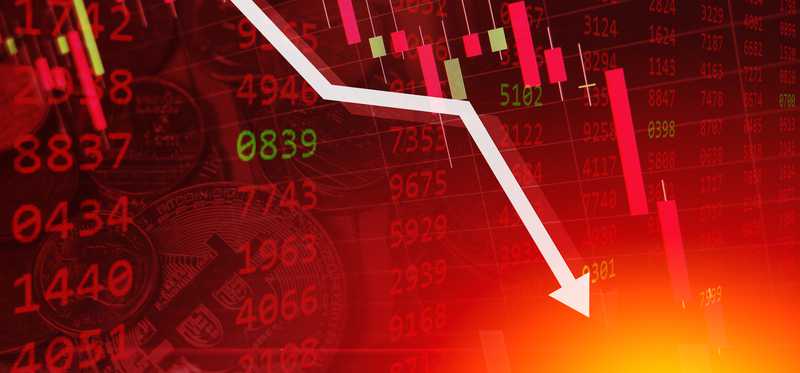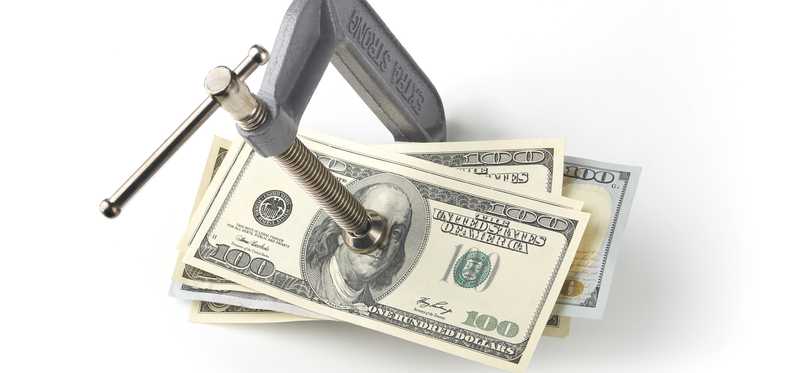Here Is Why You Should Stay Clear of Short-Selling

Here Is Why You Should Stay Clear of Short-Selling
The short story about short-selling
In investing, most people make money by owning stocks, also known as being long stocks. Investors choose this strategy when they believe a stock will go higher. But you can also bet on stocks to fall, called short-selling. In order to go short a stock, you must borrow shares from your brokerage. The idea is that, once the price falls, you buy them back and make a tidy profit.
While this idea may sound just as logical as owning stocks, in reality there are a number of added risks to short-selling that make it a strategy best avoided.
Keep reading to see 10 reasons why you should stay clear of short-selling.
5 Winning Stocks Under $49
We hear it over and over from investors, “I wish I had bought Amazon or Netflix when they were first recommended by the Motley Fool. I’d be sitting on a gold mine!” And it’s true. And while Amazon and Netflix have had a good run, we think these 5 other stocks are screaming buys. And you can buy them now for less than $49 a share! Simply click here to learn how to get your copy of “5 Growth Stocks Under $49” for FREE for a limited time only.
Previous
Next

1. The downside outweighs the upside
Normally in investing, the worst you can do is lose the money you’ve invested. In short-selling, the risk is much greater. Because you lose money when a stock rises, your losses are theoretically limitless. Imagine, for example, shorting Tesla (NASDAQ: TSLA) through 2020 as many investors did.
Shares of the electric-car maker rose more than 700% last year. In other words, if you had shorted $1,000 worth of the stock, you would have lost more than $8,000, and those losses would have continued this year. That’s a high price to pay for being wrong.
Previous
Next

2. The risk of a short squeeze
Stocks that are at a high risk of bankruptcy or are perceived as overvalued are often popular with short-sellers. As you might expect, a substantial percentage of the float for these stocks, or the number of shares available to be traded, has been sold short.
However, this adds a risk to holding these stocks as they can easily fall victim to a short squeeze if the company reports good news.
Once heavily shorted stocks start moving higher, short-sellers tend to buy back the stock to limit their losses, pushing the stock higher -- what’s called a short squeeze. This can lead to a feedback cycle that drives the stock even higher as demand from the short-sellers to buy the stock back pushes the price even higher.
Previous
Next

3. The risk of a margin call
When you buy a stock, you don’t have to worry about borrowing money from your brokerage to do so, known as using margin. However, when you sell a stock short, you have to use a margin account, putting yourself at a risk of a margin call.
If a stock you’re shorting jumps and you don’t have enough buying power to buy it back, your brokerage will force you to close out the short sale, liquidating your investment even if you still believe the stock will fall back down.
This is to your disadvantage, not only because you lost your investment but also because you have no control over the timing of the margin call.
Previous
Next

4. It can be expensive
Short-selling isn’t free. Your brokerage will charge for the service if you want to bet on stocks falling. Normally, the price is low, typically 0.3% annually of the total stock borrowed, but with stocks that are in high demand to short, the rate can go as high as 20% or 30%. Such stocks are often “hard to borrow,” meaning that you may not even be able to short them through your brokerage, and if you can, it will likely cost you.
Like with the short squeeze, this shows why it can be even harder to short stocks that seem like obvious shorts.
ALSO READ: 3 Heavily Shorted Stocks You Might Actually Want to Own
Previous
Next

5. You have to pay for dividends
If you are going short a stock, it’s best to avoid dividend-paying companies. Not only are dividend payers more stable and less likely to experience the kind of large drawdowns that can make shorting pay off, but you also have to pay back your brokerage for the dividends.
Since the brokerage is missing out on the dividends by lending out the stock, the short-seller has to reimburse the brokerage for the privilege of borrowing it. Once again, the short-seller is paying money in a situation where a shareholder would be making money.
5 Winning Stocks Under $49
We hear it over and over from investors, “I wish I had bought Amazon or Netflix when they were first recommended by the Motley Fool. I’d be sitting on a gold mine!” And it’s true. And while Amazon and Netflix have had a good run, we think these 5 other stocks are screaming buys. And you can buy them now for less than $49 a share! Simply click here to learn how to get your copy of “5 Growth Stocks Under $49” for FREE for a limited time only.
Previous
Next

6. Stocks usually go up
It can be tempting to predict the demise of a stock, and there’s a reason why stocks like Tesla and GameStop (NYSE: GME) have been popular, though disastrous, shorts in recent years. However, stocks usually go up. Bull markets tend to last much longer than bear markets, and with the exception of the short-lived crash last March, stocks have been in a bull market for 12 years.
The odds are in your favor when you’re long stocks. After all, there’s a reason why the stock market has been such powerful wealth creator over its history. Good businesses tend to keep growing. Short stocks requires investors to find the minority of companies that are either overvalued or losing value, which is difficult to do.
Previous
Next

7. The Reddit effect is real
There are a hundred lessons you can take away from the GameStop rally in January, but one revelation is that any short-seller can be taken down by a group of online traders now. The playbook is out there now, and traders have pumped up plenty of other heavily shorted stocks like AMC and Express in recent weeks.
While the recent volatility in these popular shorts could be fleeting, the risk of piling on a highly shorted stock is now abundantly clear. In the case of GameStop, hedge fund Melvin Capital lost $4.5 billion on the massive short squeeze. There’s no reason something like that can’t happen again.
ALSO READ: If You Try to Game the Stock Market, You're Going to Get Played
Previous
Next

8. Timing is everything
In long-term, buy-and-hold investing, all you have to do is find high-quality companies, buy them, and sit back and watch them compound.
Short-selling, on the other hand, is much more difficult. No stock declines forever, so it’s crucial to get your timing right. Not only do you have to know when to open the short position but also when to close it. Most investors will tell you that knowing when to close a position is often a harder decision than opening one.
Making money short-selling, therefore, tends to be much more challenging than simply holding stocks.
Previous
Next

9. Your upside is limited
The flip side of the potentially infinite downside to shorting a stock is that the upside is also limited. The best you can do is double your investment, and that requires a stock going to zero. By contrast, when you own stocks, you could make 10 times or more your initial investment over the long term.
With short-selling, not only are the potential costs much higher than holding stocks, but the potential payoff is considerably lower.
Previous
Next

10. What if you’re wrong?
A common rookie mistake is not considering the consequences of being wrong with an investment decision. It’s easy to talk yourself into a “no-brainer” decision, but nothing in investing is 100%. The recent surge in GameStop and other stocks popular on Reddit is a reminder that anything is possible.
The consequences of being wrong on a short sale are often much greater than being right, even when the case seems obvious. Tesla shorts famously bet on the company’s bankruptcy, only to have those bets blow up on them over the last year. And there are plenty of similar examples of highly shorted stock surging after a strong earnings report. Stitch Fix, for example, has popped several times on a short squeeze post-earnings.
5 Winning Stocks Under $49
We hear it over and over from investors, “I wish I had bought Amazon or Netflix when they were first recommended by the Motley Fool. I’d be sitting on a gold mine!” And it’s true. And while Amazon and Netflix have had a good run, we think these 5 other stocks are screaming buys. And you can buy them now for less than $49 a share! Simply click here to learn how to get your copy of “5 Growth Stocks Under $49” for FREE for a limited time only.
Previous
Next

Make it easy on yourself
Investing is as hard or as easy as you want to make it, and short-selling is an undoubtedly difficult way to make money on the stock market. Holding stocks gives you a number of tailwinds that turn into headwinds when you sell short. The additional risk in short-selling will also demand more attention on your portfolio to make sure you haven’t fallen victim to a short squeeze, adding nonfinancial costs as well.
Over the long term, holding stocks almost always pays off. While it may seem appealing to play the role of the contrarian and bet on stocks to fall, in the end you’re better off going with the flow.
Jeremy Bowman owns shares of Stitch Fix. The Motley Fool owns shares of and recommends Stitch Fix and Tesla. The Motley Fool has a disclosure policy.
Previous
Next
Invest Smarter with The Motley Fool
Join Over Half a Million Premium Members Receiving…
- New Stock Picks Each Month
- Detailed Analysis of Companies
- Model Portfolios
- Live Streaming During Market Hours
- And Much More
READ MORE
HOW THE MOTLEY FOOL CAN HELP YOU
-
Premium Investing Guidance
Market beating stocks from our award-winning service
-
The Daily Upside Newsletter
Investment news and high-quality insights delivered straight to your inbox
-
Get Started Investing
You can do it. Successful investing in just a few steps
-
Win at Retirement
Secrets and strategies for the post-work life you want.
-
Find a Broker
Find the right brokerage account for you.
-
Listen to our Podcasts
Hear our experts take on stocks, the market, and how to invest.
Premium Investing Services
Invest better with The Motley Fool. Get stock recommendations, portfolio guidance, and more from The Motley Fool's premium services.